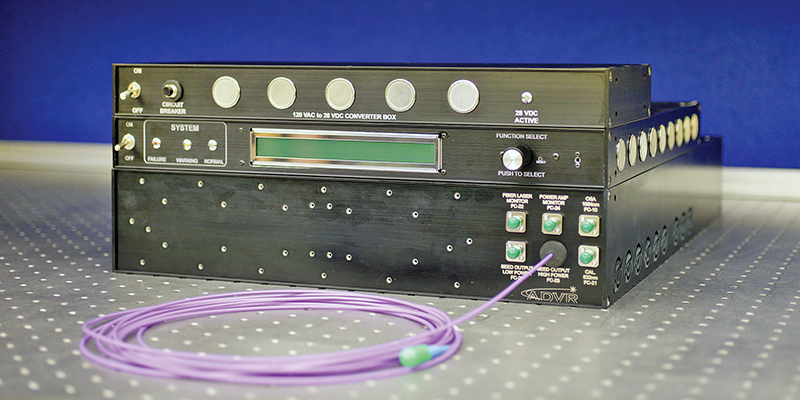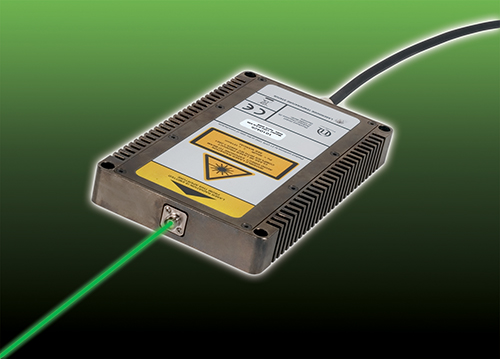
Compact, Robust Chips Integrate Optical Functions
Originating Technology/NASA Contribution
People often think of NASA’s research as pushing the boundaries of our universe—sending people, robots, and spacecraft into the dark reaches of the sky. But as NASA studies the universe, one of the most important planets it explores is Earth. Through a series of Earth-observing satellites, high-altitude research aircraft, and ground-based validation methods, NASA unveils many of the secrets of Earth’s climate, assessing everything from changes in ocean temperature and phytoplankton health, to the melting of the polar ice caps, to the levels of particulate matter in the atmosphere.
To assist the Agency in its ongoing atmospheric studies, engineers at NASA’s Langley Research Center developed the High Spectral Resolution Lidar (HSRL) to measure cloud and aerosol properties. These measurements are useful in the study of climate and air quality, while providing validation for Earth-observing satellites. Flown on Langley’s King Air B200 aircraft, HSRL is designed to take vertical measurements of air particles, examining the air’s content at different heights to give researchers a full depth of knowledge about a particular air space, a feat unable to be accomplished by satellites, for example, which, while able to provide a wide perspective, are only capable of examining the top, visible layer of a given area.
HSRL has been used to validate the measurements made by NASA’s Cloud-Aerosol Lidar and Infrared Pathfinder Satellite Observation (CALIPSO) satellite-based lidar instrument. A joint venture between NASA and CNES, the French space agency, CALIPSO is investigating the ways that clouds and airborne particles affect the planet’s weather, climate, and air quality. HSRL has also been used to monitor air quality and particulate matter over the Caribbean, Mexico, Alaska, and Canada, and was used to study wildfires threatening South Carolina’s Myrtle Beach. By taking vertical measurements of the smoke, the HSRL was able to demonstrate how smoke plumes behave—how the smoke rises and then drifts through the atmosphere—which helps researchers gain a better understanding of how wildfires affect air quality and climate systems.
Partnership
Located in Bozeman, Montana, AdvR Inc. provides engineered optical crystals, lasers, electro-optics products and integrated fiber-based systems to government, academic, and university researchers. Since 1999, AdvR has been assisting NASA in developing technologies for a variety of missions through the Agency’s Small Business Innovation Research (SBIR) and Small Business Technology Transfer (STTR) programs. In addition to working with Langley and NASA’s Goddard Space Flight Center, the 15-person company has also worked with the National Science Foundation, the U.S. Army, U.S. Navy, as well as with numerous academic and industry partners.
Langley engineers partnered with AdvR through the SBIR program to develop new, compact, lightweight electro-optic components for remote sensing systems. Through this SBIR work, AdvR created a technology that will aid HSRL in making precise measurements, while saving space and weight. The technology: an optical waveguide circuit. (A waveguide is a physical device that steers waves, such as sound waves or radar waves, in a specific direction. An optical waveguide guides electromagnetic waves in the optical spectrum. In this case, it is a fiber-coupled engineered crystal that guides the light.)
The circuit integrates several key functions into a single, compact, robust, rugged device while still producing the precise measurements necessary for NASA’s use. As such, AdvR’s optical waveguide circuit has been integrated into the new laser transmitter system being designed for HSRL and that is currently being tested in the laboratory, with anticipated incorporation into a test flight this year on the B200 research aircraft.
Product Outcome
AdvR’s circuit chip combines two optical functions—conversion of infrared light to the visible spectrum, and spectral formatting of the light so it can be locked to a precise wavelength for the high resolution and accuracy measurements required for HSRL. These functions are combined into a device about the size of a matchbox, which reduces the volume of the standard equipment by about a factor of 10. The size reduction is due in part to the optics being fiber coupled, as well as to the integration of several key functions in a single component.
Similar devices that rely on free-space beams of light are limited in how the light can be directed and are susceptible to vibrations, a problem on devices designed for aircraft. The AdvR integrated system utilizes all fiber-coupled components, which can be easily routed within a compact housing, allowing for the reduction in size and weight while also enabling highly accurate data collection. According to Shirley McNeil, senior laser systems engineer at AdvR, “There’s nothing else on the market that combines these critical electro-optic functions into a single, compact, low loss component. We are excited to see this technology in actual use on HSRL flight missions.”
These qualities make the device useful for Langley’s HSRL, but also for use on other NASA missions, such as some of the lidar remote sensing projects out of Goddard Space Flight Center and Langley’s Differential Absorption Lidar program, which is currently using five wavelengths and could potentially use this device to convert some of the wavelengths, therefore requiring fewer sources. And while the primary customer for this technology will be NASA, AdvR foresees additional uses for its NASA-derived circuit chip in the fields of academic and industrial research—anywhere that compact, low-cost, stabilized single-frequency lasers are needed.
One such adopter of the technology is a German company, Berlin-based PicoQuant GmbH. PicoQuant uses one of the components AdvR initially developed under the SBIR effort—the frequency converter—and commercialized a 530-nanometer pulsed module for a variety of research applications, such as time-correlated single photon counting, a technique to record low-level light signals with picosecond time resolution; fluorescence correlation spectroscopy; microscopy; and other bioscience and medical applications.
According to McNeil, “One such biomedical use of this pulsed laser source is to study the blood coagulation process at a molecular level.” A group of researchers led by Dr. Sandy Ross at the National Institutes of Health-funded Center of Biomedical Research Excellence in Missoula, Montana, tags the blood cells with fluorescent dyes, which are essentially probes for the interaction of interest. When pulsed light of the proper excitation wavelength illuminates the probes, the probes glow with lifetimes of a few nanoseconds, and they are able to characterize their time-dependent behavior of the processes that initiate the biological process of interest. A new pulsed source at 530nm allows Ross to more fully characterize this process, and by characterizing and understanding the blood coagulation process, they hope to provide information that will help enhance or slow down the coagulation process for specific medical applications.
Most of these applications focus on the device’s ability to convert infrared lasers to visible wavelengths, a characteristic that could lead to this technology’s adoption for displays, including large billboards and televisions. Laser-based displays and TVs use less energy than LCD or plasma screens while providing much improved contrast ratio and resolution, but the difficulty is in generating a laser in the visible green spectrum. Three primary colors (red, blue, and green) are required to generate all the colors in the visible spectrum. Red lasers, similar to those used in the bar code scanners at the grocery store, are readily available. Direct generation of blue is now also available, but direct generation of the green spectrum has not been developed. The most efficient method currently available is high-efficient frequency conversions of the infrared to the green. Significant progress is being made on laser-based TV and displays, and AdvR’s technology could be utilized for this market.

Through the SBIR program at Langley Research Center, AdvR Inc. developed components for lidar-based remote sensing instruments.

The AdvR technology combines two optical functions in one compact, robust chip that precisely locks the laser to the required wavelength. Precise locking of the laser and filter wavelengths provides greater accuracy.













